| |||||
| Decades: | |||||
|---|---|---|---|---|---|
| See also: | Other events of 1631 History of France • Timeline • Years | ||||
Events from the year 1631 in France
| |||||
| Decades: | |||||
|---|---|---|---|---|---|
| See also: | Other events of 1631 History of France • Timeline • Years | ||||
Events from the year 1631 in France

Marie de' Medici was Queen of France and Navarre as the second wife of King Henry IV. Marie served as regent of France between 1610 and 1617 during the minority of her son Louis XIII. Her mandate as regent legally expired in 1614, when her son reached the age of majority, but she refused to resign and continued as regent until she was removed by a coup in 1617.

Louis XIII was King of France from 1610 until his death in 1643 and King of Navarre from 1610 to 1620, when the crown of Navarre was merged with the French crown.
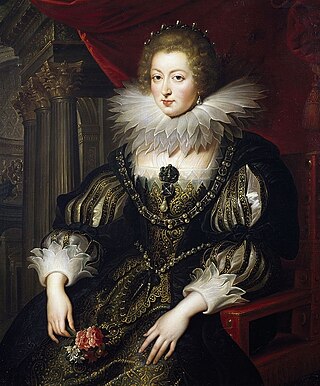
Anne of Austria was an infanta of Spain who became Queen of France as the wife of King Louis XIII from their marriage in 1615 until Louis XIII died in 1643. She was also Queen of Navarre until that kingdom was annexed into the French crown in 1620. After her husband's death, Anne was regent to her son Louis XIV, during his minority, until 1651. During her regency, Cardinal Mazarin served as France's chief minister. Accounts of French court life of Anne's era emphasize her difficult marital relations with her husband, her closeness to her son, and her disapproval of her son's marital infidelity to her niece and daughter-in-law Maria Theresa.

Armand Jean du Plessis, 1st Duke of Richelieu, known as Cardinal Richelieu, was a French statesman and clergyman. He became known as l'Éminence rouge, or "the Red Eminence", a term derived from the title "Eminence" applied to cardinals and from the red robes that they customarily wear.
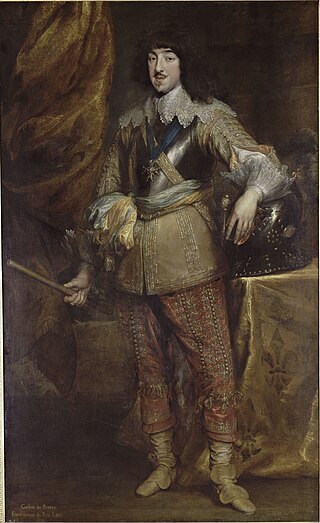
MonsieurGaston, Duke of Orléans, was the third son of King Henry IV of France and his second wife, Marie de' Medici. As a son of the king, he was born a Fils de France. He later acquired the title Duke of Orléans, by which he was generally known during his adulthood. As the eldest surviving brother of King Louis XIII, he was known at court by the traditional honorific Monsieur.
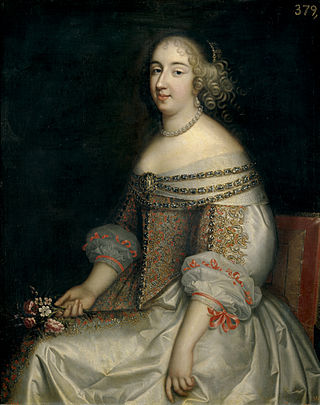
Anne Marie Louise d'Orléans, Duchess of Montpensier, known as La Grande Mademoiselle, was the only daughter of Gaston d'Orléans with his first wife, Marie de Bourbon, Duchess of Montpensier. One of the greatest heiresses in history, she died unmarried and childless, leaving her vast fortune to her cousin Philippe I, Duke of Orléans. After a string of proposals from various members of European ruling families, including Charles II of England, Afonso VI of Portugal, and Charles Emmanuel II of Savoy, she eventually fell in love with the courtier Antoine Nompar de Caumont and scandalised the court of France when she asked Louis XIV for permission to marry him, as such a union was viewed as a mésalliance. She is best remembered for her role in the Fronde and her role in bringing the famous composer Jean-Baptiste Lully to the king's court, and her Mémoires.

Abel Servien, marquis de Sablé et de Boisdauphin and Comte de La Roche des Aubiers was a French diplomat who served Cardinal Mazarin and signed for the French the Treaty of Westphalia. He was an early member of the noblesse de robe in the service of the French state.

The Palais-Royal is a former French royal palace located on Rue Saint-Honoré in the 1st arrondissement of Paris. The screened entrance court faces the Place du Palais-Royal, opposite the Louvre. Originally called the Palais-Cardinal, it was built for Cardinal Richelieu from about 1633 to 1639 by architect Jacques Lemercier. Richelieu bequeathed it to Louis XIII, before Louis XIV gave it to his younger brother, the Duke of Orléans. As the succeeding Dukes of Orléans made such extensive alterations over the years, almost nothing remains of Lemercier's original design.
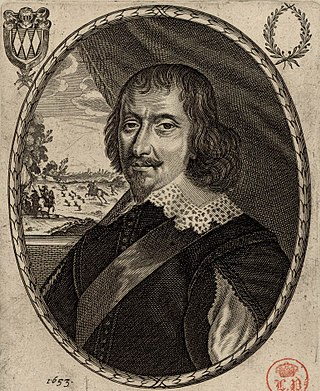
Claude Bouthillier, Sieur de Fouilletourte was a French statesman and diplomat. He held a number of offices, including Secretary of State and Superintendent of Finances, and distinguished himself in diplomacy throughout the 1630s, particularly in respect to France's entry into the Thirty Years' War.
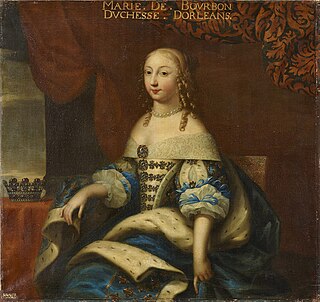
Marie de Bourbon, Duchess of Montpensier, and Duchess of Orléans by marriage, was a French noblewoman and one of the last members of the House of Bourbon-Montpensier. Her parents were Henri de Bourbon, Duke of Montpensier and Henriette Catherine de Joyeuse, Duchess of Joyeuse in her own right.
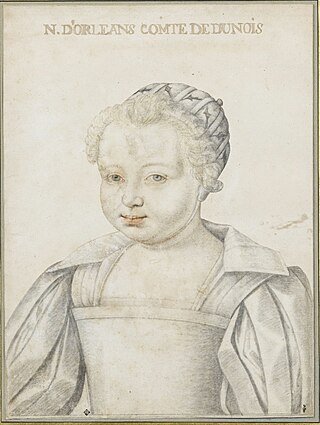
Monsieur d'Orléans was the second son and fourth child of Henry IV of France and his consort, Marie de' Medici. Commonly ascribed the names Nicolas or Nicolas Henri and the title Duke of Orléans, he was neither baptised nor invested as such during the course of his short life.

Françoise Madeleine d'Orléans was born a Princess of France and was the Duchess of Savoy as the first wife of Charles Emmanuel II. She was a first cousin of Louis XIV as well of her husband. She was the shortest-serving Savoyard consort, dying at the age of fifteen, childless.
La Reine et le Cardinal is a 2009 French television film directed by Marc Rivière and starring Alessandra Martines and Philippe Torreton in the title roles. It is based on events in the early years of the reign of Louis XIV of France. The drama of the rumored love affair between the child king's widowed mother, Anne of Austria, and her prime minister, Cardinal Mazarin, unfolds as intrigue and political discord ignite the Fronde. The second part of the film covers the romance between Louis XIV and Mazarin's niece, Marie Mancini and ends with the death of Mazarin. Broadcast in two parts, it lasts over three hours. Marc Rivière won a best director awards at the La Rochelle TV festival

Jean Puget de la Serre was a French author and dramatist.
Marie-Anne-Hyacinthe Horthemels was a French engraver, wife of the King's engraver Nicolas-Henri Tardieu.
Events from the year 1608 in France
Events from the year 1624 in France.
Events from the year 1634 in France.
Events from the year 1639 in France
Louis-Henri d'Aquin was born in 1602 in Avignon and died in December 1673 in Paris. He was the physician of Queen mothers of Louis XIII, Marie de' Medici, and of Louis XIV, Anne of Austria, then ordinary physician of Louis XIV from 1644. He was hebraist and gemstones broker.